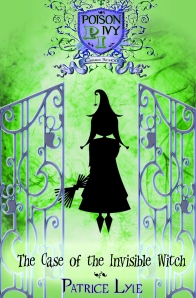ACTIVITY ONE
Objectives
·
CCSS.ELA-LITERACY.CCRA.R.7
Integrate and evaluate content presented in diverse media and formats, including visually and quantitatively, as well as in words.
Integrate and evaluate content presented in diverse media and formats, including visually and quantitatively, as well as in words.
·
CCSS.ELA-LITERACY.RI.7.3
Analyze the interactions between individuals, events, and ideas in a text (e.g., how ideas influence individuals or events, or how individuals influence ideas or events).
Analyze the interactions between individuals, events, and ideas in a text (e.g., how ideas influence individuals or events, or how individuals influence ideas or events).
· CCSS.ELA-LITERACY.RST.6-8.3
Follow precisely a multistep procedure when carrying out experiments, taking measurements, or performing technical tasks.
Follow precisely a multistep procedure when carrying out experiments, taking measurements, or performing technical tasks.
· CCSS.ELA-LITERACY.RST.6-8.7
Integrate quantitative or technical information expressed in words in a text with a version of that information expressed visually (e.g., in a flowchart, diagram, model, graph, or table).
Integrate quantitative or technical information expressed in words in a text with a version of that information expressed visually (e.g., in a flowchart, diagram, model, graph, or table).
Procedure
1. Have students work in groups to research different
weather instruments mentioned in Storm
Watcher. Their research should include what the instrument is, how to make
one, how meterologists use the data from it to predict the weather, and why
such predictions are important.
2. Student should then make the instruments and set up a
weather station in the school yard.
3. Students should collect data from the weather station
and graph it to look for trends and make predictions.
4. Students should make write scripts for a weather
report that can be shown on the morning announcements.
Note: While all of these activities can be conducted in a
language arts or science classroom, if teachers are teamed it would be more
efficient to share the tasks, such that #1 and #4 are completed in a language
arts classroom, #2 is completed in the science classroom, and #3 is completed
in a math classroom.
Possible extension: Have a meterologist come speak to the
students about his/her job and take a field trip
to a weather station.
ACTIVITY 2
Other possible research extensions when reading Storm Watcher are
mental health issues. In Storm Watcher, the main character, Luke, struggles with Severe Weather
Phobia. Current events indicate that our mental health system is inadequate and
educating our students about some mental health issues could be a step toward positive
change.
Objectives:
· CCSS.ELA-LITERACY.RH.6-8.2
Determine the central ideas or information of a primary or secondary source; provide an accurate summary of the source distinct from prior knowledge or opinions.
Determine the central ideas or information of a primary or secondary source; provide an accurate summary of the source distinct from prior knowledge or opinions.
·
CCSS.ELA-LITERACY.SL.7.5
Include multimedia components and visual displays in presentations to clarify claims and findings and emphasize salient points.
Include multimedia components and visual displays in presentations to clarify claims and findings and emphasize salient points.
·
CCSS.ELA-LITERACY.RI.7.8
Trace and evaluate the argument and specific claims in a text, assessing whether the reasoning is sound and the evidence is relevant and sufficient to support the claims.
Trace and evaluate the argument and specific claims in a text, assessing whether the reasoning is sound and the evidence is relevant and sufficient to support the claims.
Procedure:
1. Students
should choose a mental illness to research. Questions they should try to answer
include what it is, symptoms, and treatment. When possible their research
should attempt to determine the quality of the treatment available and any
current event stories linked to the illness.
2. Students
should work in groups to put together public service announcements on various
mental health issues. This might include writing press releases, creating a class
blog, making videos for YouTube, creating Prezis, or
recording podcasts.
Other possible research topics include: dogs and rescues
Look
for my blog post here next month with possible discussion questions to use with
Storm Watcher.
Mary Helen Sheriff lives in Richmond, VA with her husband, two children, and two cats. She has an MFA in children’s literature from Hollins University and is an experienced teacher of elementary, middle grade, and college students. Her most recent publishing credits include four middle grade short stories for a reading comprehension website and a YA short story for an anthology written for Ethiopians learning English. She is currently writing a novel and maintaining a blog where you can read her thoughts on writing and education.





